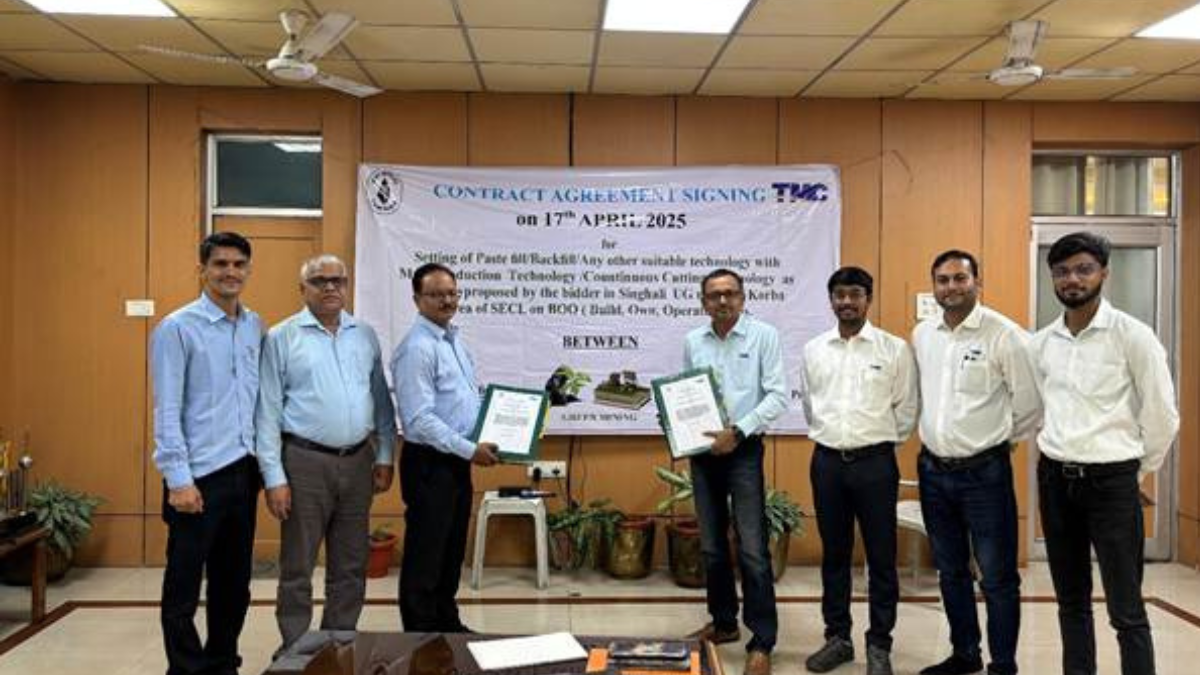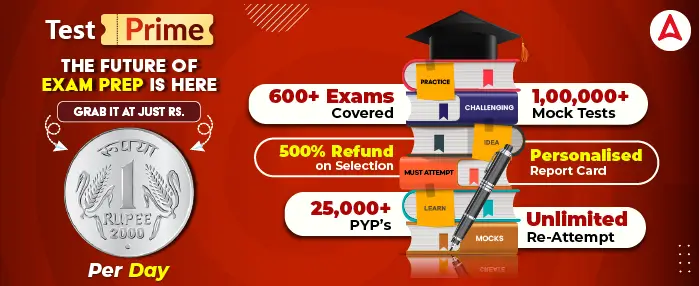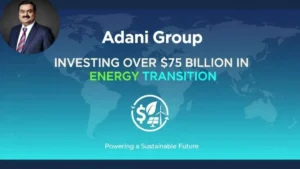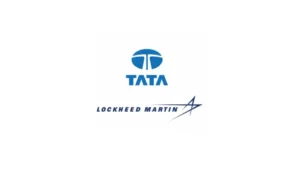South Eastern Coalfields Limited (SECL) is making history in India’s mining sector by becoming the first coal PSU to implement paste fill technology for underground coal mining. This groundbreaking initiative represents a significant advancement in sustainable and environmentally responsible mining practices within the country’s coal industry. The adoption of this innovative approach promises to transform how coal is extracted in areas with surface constraints while minimizing environmental impact.
Strategic Partnership and Investment
To implement this cutting-edge underground mining technology, SECL has entered into a substantial agreement with TMC Mineral Resources Private Limited, valued at ₹7040 crore. This partnership demonstrates SECL’s commitment to incorporating advanced technologies that align with modern environmental standards while ensuring continued coal production to meet energy demands.
The agreement establishes a framework for large-scale coal production using paste fill technology at the Singhali underground coal mine in SECL’s Korba area. This long-term project spans 25 years and aims to produce approximately 8.4 million tonnes (84.5 lakh tonnes) of coal over its lifetime. The significant investment and extended timeline highlight the strategic importance of this project for India’s coal sector.
Understanding Paste Fill Technology
Paste fill technology represents a modern approach to underground mining that offers substantial environmental and operational benefits. Unlike traditional mining methods that often require surface land acquisition and may cause land subsidence, paste fill technology provides a more sustainable alternative.
The process involves extracting coal from underground seams and then filling the resultant voids with a specially engineered paste. This paste consists of a mixture of fly ash, crushed overburden from opencast mines, cement, water, and binding chemicals. Once injected into the mined-out areas, this paste hardens to provide structural support to the surrounding rock mass.
The key advantages of this technology include:
- Prevention of land subsidence, which ensures the stability of surface infrastructure
- Elimination of the need for surface land acquisition, making mining possible in densely populated or developed areas
- Utilization of industrial waste materials like fly ash, promoting circular economy principles
- Enhanced mine safety through improved ground control and stability
- Reduced environmental footprint compared to conventional mining methods
By incorporating industrial waste materials into the paste mixture, this technology also contributes to waste recycling, further enhancing its environmental credentials.
Singhali Mine: Historical Context and Challenges
The Singhali underground mine has a lengthy operational history that provides important context for understanding the significance of introducing paste fill technology at this location. The mine received initial approval in 1989 for a production capacity of 0.24 million tonnes per year and commenced operations in 1993.
Currently, the mine contains 8.45 million tonnes of extractable reserves of G-7 grade non-coking coal, representing a valuable energy resource. During its operational history, the mine was developed using the traditional Bord and Pillar method, employing specialized equipment including Load Haul Dumpers (LHDs) and Universal Drilling Machines (UDMs) for underground operations.
However, the mine faces significant operational constraints due to the dense occupation of its surface area. The land above the mine accommodates villages, high-tension electricity lines, and a Public Works Department (PWD) road. These surface features make traditional caving methods—which typically cause controlled surface subsidence—unfeasible due to safety concerns and potential environmental impact.
Unlocking New Mining Potential
The implementation of paste fill technology presents a solution to the challenges facing the Singhali mine and similar operations throughout India. By enabling mining activities to proceed without disturbing surface infrastructure, this technology unlocks coal reserves that were previously considered inaccessible or economically unviable.
The successful application of paste fill technology at Singhali is expected to establish a precedent for resuming operations in other underground mines facing similar land constraints. This could potentially revitalize numerous dormant mining assets across the country, contributing to increased domestic coal production while adhering to strict environmental standards.
Environmental and Economic Implications
With a total investment of ₹7040 crore, this project represents a major financial commitment to promoting green mining technologies in India. The initiative aims to enhance coal production while significantly reducing the environmental footprint traditionally associated with coal mining activities.
The environmental benefits extend beyond the immediate mining area. By utilizing fly ash—a byproduct of coal combustion in thermal power plants—the technology helps address the challenge of fly ash disposal, which has been a persistent environmental concern. Similarly, the use of overburden material from opencast mines contributes to better waste management practices in the mining sector.
From an economic perspective, the technology enables access to coal reserves that would otherwise remain unexploited, thereby enhancing the nation’s energy security. Additionally, the project is expected to create employment opportunities and stimulate economic activity in the region through its long-term operational timeline.
Industry Leadership and Future Vision
SECL’s adoption of paste fill technology demonstrates leadership in embracing innovative solutions to balance resource extraction with environmental responsibility. Speaking about the initiative, SECL CMD Shri Harish Duhan emphasized the transformative potential of this technology: “I firmly believe that paste fill technology will not only secure the future of underground mining but also offer an innovative, eco-friendly solution. This project is a landmark step toward green mining and will shape the future of the coal industry in the years to come.”
This forward-looking vision suggests that paste fill technology could become a standard practice in India’s mining industry, particularly in areas where surface constraints have previously limited underground mining activities. As the first coal PSU to implement this technology at scale, SECL is positioning itself at the forefront of sustainable mining practices in India.



 Amul Renews Partnership with Argentina F...
Amul Renews Partnership with Argentina F...
 Adani Group to Invest Over $75 Billion i...
Adani Group to Invest Over $75 Billion i...
 Tata–Lockheed Martin to Build New MRO Fa...
Tata–Lockheed Martin to Build New MRO Fa...







